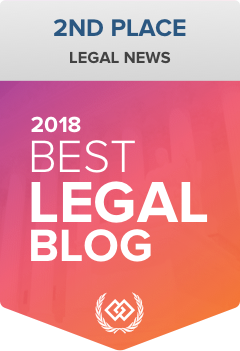Going Public and Direct Public Offerings Provide Benefits in 2025
Going public is still considered a benefit to issuers seeking to raise capital or obtain recognition of their business. Even in a down economy, private companies seek the perceived benefits of being publicly traded. While there are a variety of ways to create a publicly traded company, each comes with its own unique requirements and risks. The Direct Public Offering (“DPO”) eliminates many of the risks and expenses associated with reverse mergers into public shell companies. Issuers going public using a DPO also have fewer hurdles to obtaining electronic trading from Depository Trust Company (“DTC”).
Reverse merger companies often encounter DTC chills and global locks because of prior unregistered securities issuances and being public shells under prior management.
Types of Registered Offerings: Issuers going public with an Initial Public Offering (“IPO”) or DPO must file a registration statement pursuant to the Securities Act of 1933, as amended (the “Securities Act”). The most commonly used registration statement is Form S-1 for domestic issuers and Form F-1 for foreign issuers seeking to go public.
An IPO occurs when an investment banking firm assists an issuer with raising funds by selling securities registered under the Securities Act. Many issuers do not meet the income, asset, revenue, or capital requirements that investment banking firms require.
A DPO involves an issuer filing a registration statement with the SEC, typically on Form S-1 (“S-1″), that registers shares from the issuer’s treasury. Once the SEC declares the registration statement effective, the issuer then sells the registered securities directly to investors without the use of an underwriter. A direct public offering can also involve the issuer filing a resale registration on Form S-1 to register shares that its existing shareholders hold. This method does not register securities for the issuer to sell to investors.
SEC Review of Registration Statements.
After the issuer files the registration statement, it is then subject to review by the Securities and Exchange Commission (“SEC”). After a review of the registration statement, the SEC may render comments that the issuer will address by filing amendments to its registration statement. When all of the SEC comments have been answered to the satisfaction of the SEC, it will declare the registration statement effective.
Getting a Ticker Symbol
Filing a registration statement under any of the above methods will not cause an issuer’s securities to become publicly traded and will not result in the assignment of a ticker symbol. After satisfying all the requirements of the SEC, the issuer then must comply with the requirements of either listing on a National Stock Market like NASDAQ or the NYSE or meet the criteria for quotation on the OTC Markets OTC Link to obtain a ticker symbol.
Establishing an Active Market
Generally, for OTC Markets issuers, the issuer must have 35 shareholders for the OTC Pink and 50 for the OTCQB that are held by non-affiliate investors and registered or held for 6 months if the issuer is reporting or 12 months if not. These shares in the aggregate should represent at least 10% of the issuer’s outstanding securities and are often referred to as the “ Public Float.” The Public Float must also be somewhat evenly distributed without significant concentration in one or a few shareholders.
Form 211
Prior to the amendments to Rule 15c2-11 in September 2021, FINRA required issuers to locate a sponsoring market maker and file Form 211 (“211”). Now, the OTC markets can submit this information.
After the information is provided, FINRA reviews it and provides comments for the sponsoring market maker or OTC Markets to address. Upon receiving confirmation that all comments have been answered satisfactorily, a ticker symbol is assigned, and the issuers’ securities are publicly traded.
A Word About Reverse Mergers
By undertaking the DPO, the issuer has avoided the expenses and risks associated with a reverse merger transaction. Reverse mergers are rarely done properly and have, therefore, become perceived by regulators as vehicles of fraud. Most shell companies often have incomplete and sloppy records, pending lawsuits, and other liabilities, including securities violations. A common misconception exists that a reverse merger is a fast and certain method of becoming publicly traded. If proper due diligence is undertaken more often than not, the shell company will not pass the scrutiny of the SEC and/or FINRA.
In order to combat fraud that is associated with shell companies, both FINRA and the SEC have imposed significant requirements for reverse merger transactions. Upon the closing of a reverse merger, under Rule 6490, the issuer must submit the merger to FINRA for review and processing, which generally takes at least 60 days. FINRA has complete discretion over whether to process corporate changes related to reverse mergers and other change of control transactions. Owners of private companies are learning the hard way that reverse mergers are, more often than not, a costly mistake.
To speak with a Securities Attorney, please contact Brenda Hamilton at 200 E Palmetto Rd, Suite 103, Boca Raton, Florida, (561) 416-8956, or by email at [email protected]. This securities law blog post is provided as a general informational service to clients and friends of Hamilton & Associates Law Group and should not be construed as and does not constitute legal advice on any specific matter, nor does this message create an attorney-client relationship. Please note that the prior results discussed herein do not guarantee similar outcomes.
Hamilton & Associates | Securities Attorneys
Brenda Hamilton, Securities Attorney
200 E Palmetto Rd, Suite 103
Boca Raton, Florida 33432
Telephone: (561) 416-8956
Facsimile: (561) 416-2855
www.SecuritiesLawyer101.com







